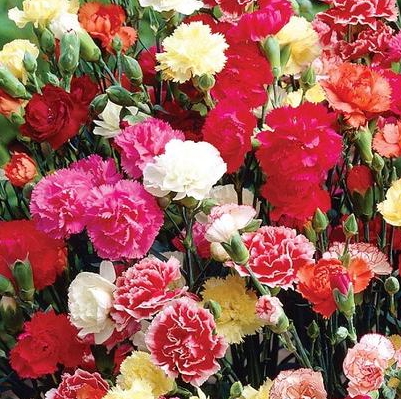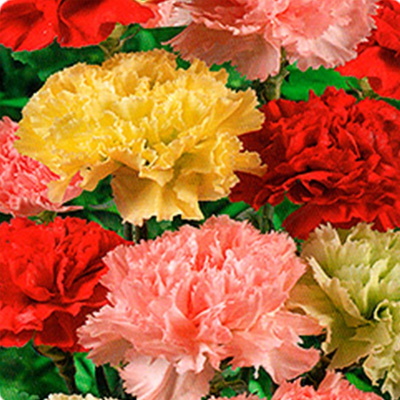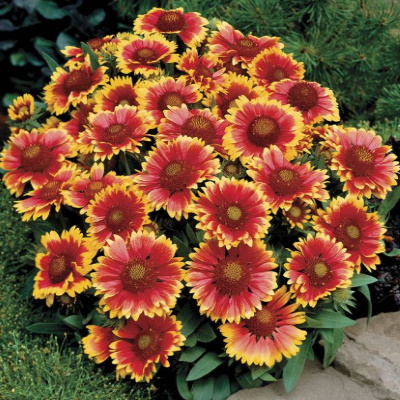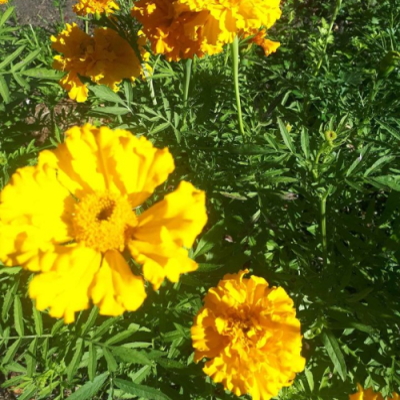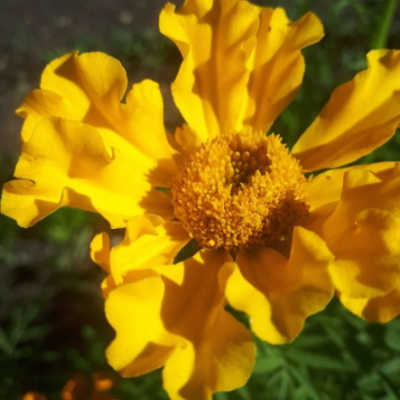Your delivery will be free if your order is $25.00 or more
-
Out of stock
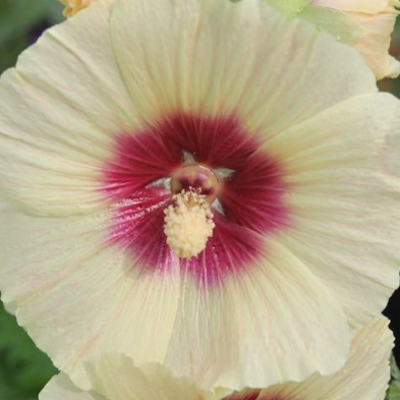
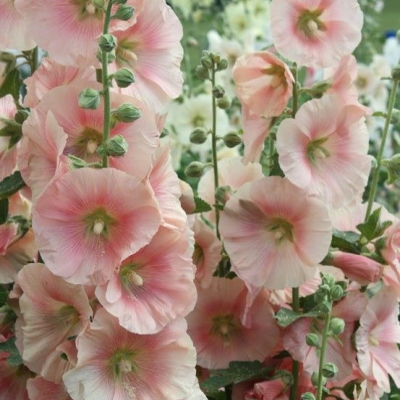 Hollyhock Seeds -Coral & Indian Spring Mix The semi-tall stalks of Indian Spring Hollyhock are filled with single and semi-double blooms in shades of pink, coral, white, cream, purple, and lavender. Prolifically blooming, Indian Spring Mix is known to bloom in its first year, which is unusual for Hollyhocks.
Hollyhock Seeds -Coral & Indian Spring Mix The semi-tall stalks of Indian Spring Hollyhock are filled with single and semi-double blooms in shades of pink, coral, white, cream, purple, and lavender. Prolifically blooming, Indian Spring Mix is known to bloom in its first year, which is unusual for Hollyhocks. -
Out of stock
 This early 1900’s introduction is the standard by which all the others are graded. Each large pod grows on 75 cm stems and has pods containing 7-9 peas. This main crop pea variety has been used by gardeners from coast to coast for more than 100 years. It has a distinct pea flavour which is superior and is excellent for freezing but like all peas are best straight out of the garden.
This early 1900’s introduction is the standard by which all the others are graded. Each large pod grows on 75 cm stems and has pods containing 7-9 peas. This main crop pea variety has been used by gardeners from coast to coast for more than 100 years. It has a distinct pea flavour which is superior and is excellent for freezing but like all peas are best straight out of the garden. -
Out of stock
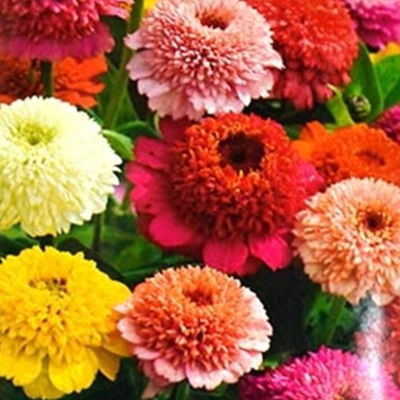 Annual flowering plant growth up to 50-80 cm. Large flowers, diameter 8-10 cm in various bright colors. Blooms from June until frost.
Annual flowering plant growth up to 50-80 cm. Large flowers, diameter 8-10 cm in various bright colors. Blooms from June until frost. -
Out of stock
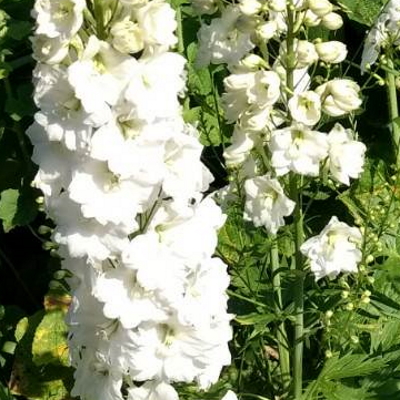
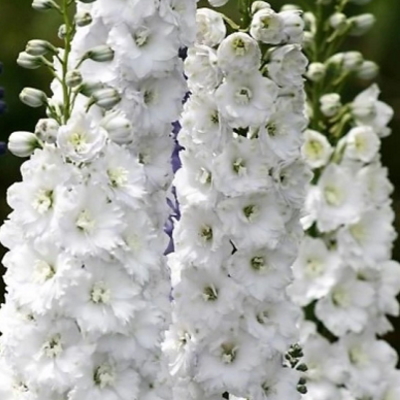 An F1 hybrid breeding breakthrough. Excellent bloom production during short days for cut flowers. GREENHOUSE: Sow in Jan. or early Feb. Freeze seed for 24 hrs. just before sowing, to break dormancy. Use Jiffy Mix or fine sand for a growing medium. Germinate in cool soil at 54°F/12°C for 20 days, according to color (best colors are smallest seedlings). High temp. will prevent germ. Grow seedlings cool, at 60°F/16°C days and 50°F/10°C nights. DIRECT SOWING: Sow outside in late August in cool soil. Freeze seed 24 hours before sowing. Do not pinch the flower heads. For improved blossoms, add lime to the soil each year.
An F1 hybrid breeding breakthrough. Excellent bloom production during short days for cut flowers. GREENHOUSE: Sow in Jan. or early Feb. Freeze seed for 24 hrs. just before sowing, to break dormancy. Use Jiffy Mix or fine sand for a growing medium. Germinate in cool soil at 54°F/12°C for 20 days, according to color (best colors are smallest seedlings). High temp. will prevent germ. Grow seedlings cool, at 60°F/16°C days and 50°F/10°C nights. DIRECT SOWING: Sow outside in late August in cool soil. Freeze seed 24 hours before sowing. Do not pinch the flower heads. For improved blossoms, add lime to the soil each year. -
Out of stock
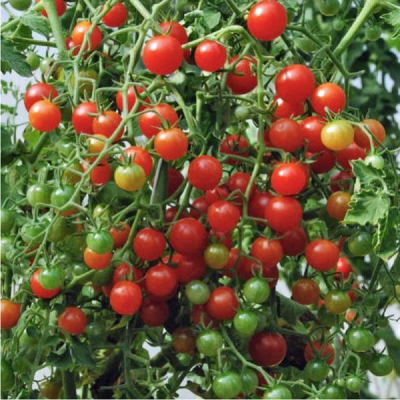 Red Currant plants produce copious quantities of small 1 cm, deep red tomatoes that are exceptionally sweet and packed with flavour. They typically require around 75 days to reach maturity, and make a good choice for containers and hanging baskets, though they are indeterminate growers. Currant tomatoes are native of Peru and Brazil. It was illustrated by Louis Feuille in 1725 Perfect for snacking tomatoes directly from the garden. Great for summer salads. Fruits from early summer until fall frost. Each plant produces 1000's of tiny tomatoes. Best for hanging baskets.
Red Currant plants produce copious quantities of small 1 cm, deep red tomatoes that are exceptionally sweet and packed with flavour. They typically require around 75 days to reach maturity, and make a good choice for containers and hanging baskets, though they are indeterminate growers. Currant tomatoes are native of Peru and Brazil. It was illustrated by Louis Feuille in 1725 Perfect for snacking tomatoes directly from the garden. Great for summer salads. Fruits from early summer until fall frost. Each plant produces 1000's of tiny tomatoes. Best for hanging baskets. -
Out of stock
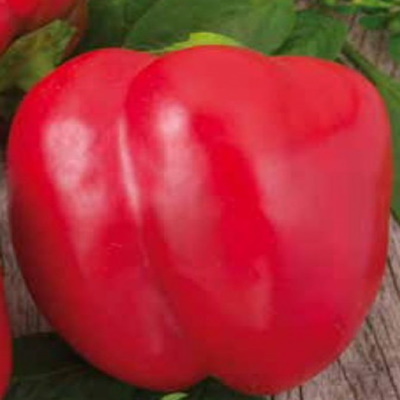 Mid-season (90-100 days) Chinese heirloom variety. One of the biggest, red bell peppers, width 10 cm with an excellent, sweet, juicy taste. Very thick walls.
Mid-season (90-100 days) Chinese heirloom variety. One of the biggest, red bell peppers, width 10 cm with an excellent, sweet, juicy taste. Very thick walls. -
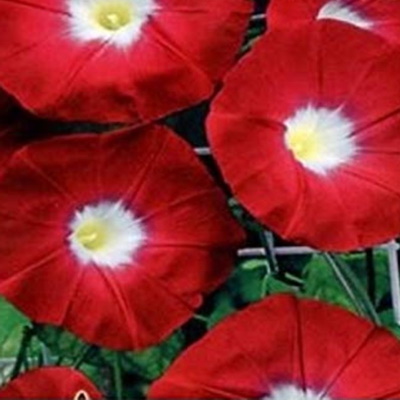 Annual climbing plant grows up 2-4 meters tall. Large, trumpet-shaped red flowers open only during sunny days. During the night and cloudy days, they remain closed. Blooms from July until the first frost. Great for balconies, gazebos, terraces and to create hedges. Caution: Seeds are poisonous if ingested. [/fusion_alert]
Annual climbing plant grows up 2-4 meters tall. Large, trumpet-shaped red flowers open only during sunny days. During the night and cloudy days, they remain closed. Blooms from July until the first frost. Great for balconies, gazebos, terraces and to create hedges. Caution: Seeds are poisonous if ingested. [/fusion_alert] -
Out of stock
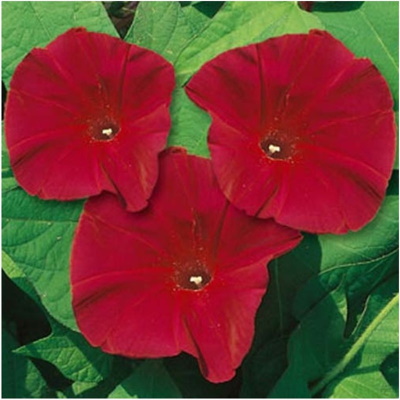 Annual climbing plant grows up 2-4 meters tall. Large, trumpet-shaped dark red flowers open only during sunny days. During the night and cloudy days, they remain closed. Blooms from July until the first frost. Great for balconies, gazebos, terraces and to create hedges. Caution: Seeds are poisonous if ingested. [/fusion_alert]
Annual climbing plant grows up 2-4 meters tall. Large, trumpet-shaped dark red flowers open only during sunny days. During the night and cloudy days, they remain closed. Blooms from July until the first frost. Great for balconies, gazebos, terraces and to create hedges. Caution: Seeds are poisonous if ingested. [/fusion_alert] -
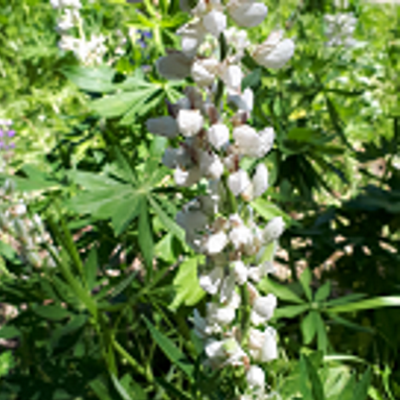
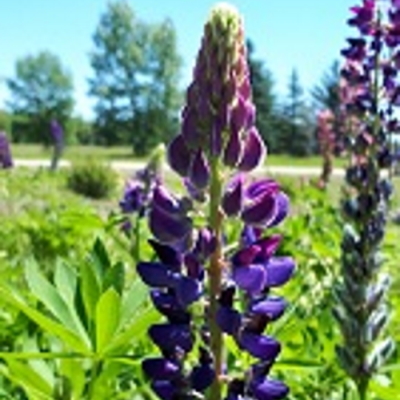 Stunning, brightly-colored spikes create a strong feature in the early summer garden. Its pea-like flowers grow in dense spires. Scatter through cottage or wildflower gardens or mass plant in the border. Purple, deep blue, red, pink, yellow, cream, and white. Lupins prefer a full sun position but will also grow well in semi-shade, they do not grow well in full shade. They grow well in a wide variety of soil conditions although chalky and/or waterlogged soil will be a problem if not improved before planting. If the ground is clay, lots of compost dug into the planting area will greatly increase their chances of surviving winters. Once your Lupins start to flower create new plants if you want more of a certain colour, gently separate the little offset at the base of a mature plant and replant it.
Stunning, brightly-colored spikes create a strong feature in the early summer garden. Its pea-like flowers grow in dense spires. Scatter through cottage or wildflower gardens or mass plant in the border. Purple, deep blue, red, pink, yellow, cream, and white. Lupins prefer a full sun position but will also grow well in semi-shade, they do not grow well in full shade. They grow well in a wide variety of soil conditions although chalky and/or waterlogged soil will be a problem if not improved before planting. If the ground is clay, lots of compost dug into the planting area will greatly increase their chances of surviving winters. Once your Lupins start to flower create new plants if you want more of a certain colour, gently separate the little offset at the base of a mature plant and replant it. -
-
Out of stock
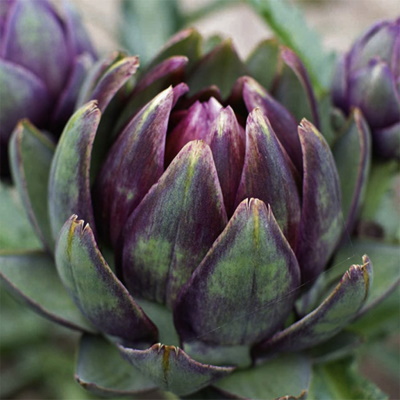 Start seed indoors in a soil-less mix 8-12 weeks before the last frost date in your area. Sow the seed 6 mm (1/4″) deep and germinate at 21-26 C (70-80 F). When seedlings are 2.5-5 cm (1-2″) high transplant to individual 10 cm (4″) pots and grow on at 15-21 C. Harden off and transplant to the garden after the threat of frost has passed. Artichoke does best in full sun with a deep, organic, fertile soil. Space plants 60-90 cm (24-36″) apart in the row with rows 1.75 m (6′) apart. Keep plants evenly watered and mulch the soil to help preserve soil moisture and keep the soil from becoming too warm in summer. If the soil does become too warm, it can trigger a summer dormant period. Start with a thin layer of mulch and build it up to 10 cm (4″) thick as the plants grow.
Start seed indoors in a soil-less mix 8-12 weeks before the last frost date in your area. Sow the seed 6 mm (1/4″) deep and germinate at 21-26 C (70-80 F). When seedlings are 2.5-5 cm (1-2″) high transplant to individual 10 cm (4″) pots and grow on at 15-21 C. Harden off and transplant to the garden after the threat of frost has passed. Artichoke does best in full sun with a deep, organic, fertile soil. Space plants 60-90 cm (24-36″) apart in the row with rows 1.75 m (6′) apart. Keep plants evenly watered and mulch the soil to help preserve soil moisture and keep the soil from becoming too warm in summer. If the soil does become too warm, it can trigger a summer dormant period. Start with a thin layer of mulch and build it up to 10 cm (4″) thick as the plants grow. -
Out of stock
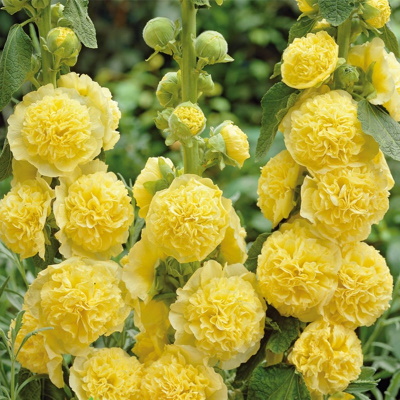 Perennial, grows 150-250cm tall. Large, yellow, double flowers collected in giant inflorescences. Blooms in the second year from July. Use for group plantings, borders, and cutting.
Perennial, grows 150-250cm tall. Large, yellow, double flowers collected in giant inflorescences. Blooms in the second year from July. Use for group plantings, borders, and cutting. -
-
Out of stock
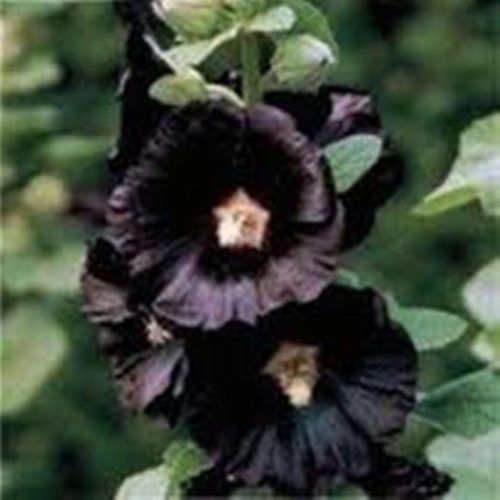 Biennial. This traditional variety is shockingly beautiful and richly coloured with its near-black flowers with just a hint of red. Gorgeous planted in the back of your flower bed or next to white buildings white flowers. A must for historical gardens.
Biennial. This traditional variety is shockingly beautiful and richly coloured with its near-black flowers with just a hint of red. Gorgeous planted in the back of your flower bed or next to white buildings white flowers. A must for historical gardens. -
Out of stock
 Mid-season (95-110 days) variety for open ground. The plants grow 45-55 cm tall. Smooth, bright red fruits, weight 50-85 grams with an excellent taste.
Mid-season (95-110 days) variety for open ground. The plants grow 45-55 cm tall. Smooth, bright red fruits, weight 50-85 grams with an excellent taste. -
Out of stock
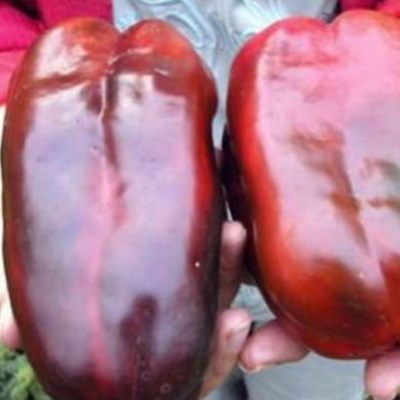 Red Giant was twice as big as the largest bell pepper. Plants are compact 60 cm tall. Truly remarkable then and now. Mid-season variety (140-160 days). Scrub grows up to 80-100 cm high, requires support during fruiting. Oblong-prismatic shaped very large red-coloured fruits, weight 500-800 grams, 20-30 cm long. Use fresh and for freezing and canning.
Red Giant was twice as big as the largest bell pepper. Plants are compact 60 cm tall. Truly remarkable then and now. Mid-season variety (140-160 days). Scrub grows up to 80-100 cm high, requires support during fruiting. Oblong-prismatic shaped very large red-coloured fruits, weight 500-800 grams, 20-30 cm long. Use fresh and for freezing and canning. -
-
 This delightful Japanese Catmint has many merits. Both the foliage and the flowers are fragrant. It blooms the first year from seed, unlike most perennials. It is upright and nicely branched, rather than sprawling. Make it a centerpiece of your containers and sunny-to-partly-shaded garden areas! Sister to Panther Dark Blue which walked off with the Bronze Medal at Holland's prestigious Plantarium competition in 2015. The attractive little plant is much more compact than other catmint species, standing just 20 cm high and 25 cm wide. The foliage is bright green, glossy, and toothed, releasing a strong, heavenly fragrance from spring through fall. Profuse bloomer! Medium to dark pink, these tubular flowers reach up to 5 cm long, held in nice clusters on the top of the plant. The blossoms are fragrant, and they begin in early summer and go right through into early fall. You'll be amazed by the flower power of this petite plant.
This delightful Japanese Catmint has many merits. Both the foliage and the flowers are fragrant. It blooms the first year from seed, unlike most perennials. It is upright and nicely branched, rather than sprawling. Make it a centerpiece of your containers and sunny-to-partly-shaded garden areas! Sister to Panther Dark Blue which walked off with the Bronze Medal at Holland's prestigious Plantarium competition in 2015. The attractive little plant is much more compact than other catmint species, standing just 20 cm high and 25 cm wide. The foliage is bright green, glossy, and toothed, releasing a strong, heavenly fragrance from spring through fall. Profuse bloomer! Medium to dark pink, these tubular flowers reach up to 5 cm long, held in nice clusters on the top of the plant. The blossoms are fragrant, and they begin in early summer and go right through into early fall. You'll be amazed by the flower power of this petite plant. -
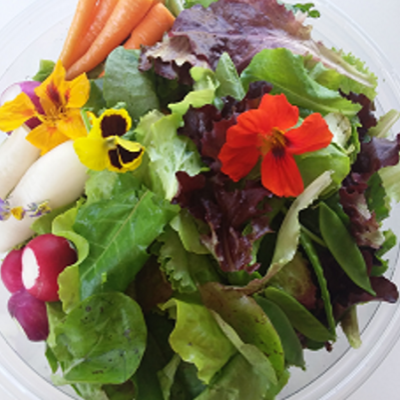 Nasturtium is a cheerful, easy, quick-growing annual flower! They’re colorful, edible flowers, and good for kids to plant. Salad Blend nasturtiums feature spurless, half-double flowers in tangerine, soft salmon, deep gold, deep mahogany, bright scarlet, cream, and cherry-rose. Pick and wash a handful of these bright summer flowers and just tear them into pieces over a summer salad. The result transforms a simple salad into a work of art. They’re also great for companion planting as a fantastic trap crop; the mustard oil they produce is adored by garden pests. After seeding, plants appear in 7 to 10 days.
Nasturtium is a cheerful, easy, quick-growing annual flower! They’re colorful, edible flowers, and good for kids to plant. Salad Blend nasturtiums feature spurless, half-double flowers in tangerine, soft salmon, deep gold, deep mahogany, bright scarlet, cream, and cherry-rose. Pick and wash a handful of these bright summer flowers and just tear them into pieces over a summer salad. The result transforms a simple salad into a work of art. They’re also great for companion planting as a fantastic trap crop; the mustard oil they produce is adored by garden pests. After seeding, plants appear in 7 to 10 days. -
-
Out of stock
 This delightful Japanese Catmint has many merits. Both the foliage and the flowers are fragrant. It blooms the first year from seed, unlike most perennials. It is upright and nicely branched, rather than sprawling. Make it a centerpiece of your containers and sunny-to-partly-shaded garden areas! Panther Dark Blue walked off with the Bronze Medal at Holland's prestigious Plantarium competition in 2015. The attractive little plant is much more compact than other catmint species, standing just 20 cm high and 25 cm wide. The foliage is bright green, glossy, and toothed, releasing a strong, heavenly fragrance from spring through fall. Profuse bloomer! Medium to dark blue, these tubular flowers reach up to 5 cm long, held in nice clusters on the top of the plant. The blossoms are fragrant, and they begin in early summer and go right through into early fall. You'll be amazed by the flower power of this petite plant.
This delightful Japanese Catmint has many merits. Both the foliage and the flowers are fragrant. It blooms the first year from seed, unlike most perennials. It is upright and nicely branched, rather than sprawling. Make it a centerpiece of your containers and sunny-to-partly-shaded garden areas! Panther Dark Blue walked off with the Bronze Medal at Holland's prestigious Plantarium competition in 2015. The attractive little plant is much more compact than other catmint species, standing just 20 cm high and 25 cm wide. The foliage is bright green, glossy, and toothed, releasing a strong, heavenly fragrance from spring through fall. Profuse bloomer! Medium to dark blue, these tubular flowers reach up to 5 cm long, held in nice clusters on the top of the plant. The blossoms are fragrant, and they begin in early summer and go right through into early fall. You'll be amazed by the flower power of this petite plant. -
Out of stock
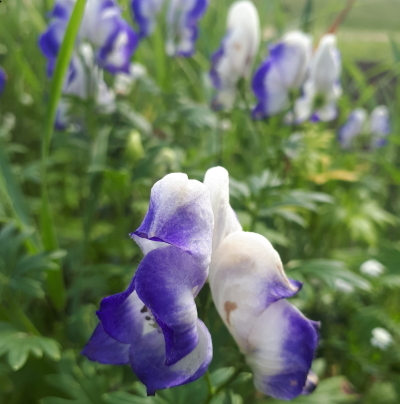 25 seeds per order. Purple Monkshood seeds 2020 harvest.
25 seeds per order. Purple Monkshood seeds 2020 harvest. -
Out of stock
 Enjoy a baby's breath that is actually pink! Plant in your sunny perennial garden and watch as large panicles of true light pink flowers splash your garden from early through midsummer. This upright, well-branched, bush type grows up to 3' tall. Use as a filler plant to cover dying bulb foliage or for perennials that go dormant in the summer months. The pretty pink flowers also are perfect in floral arrangements! Makes an excellent dried flower.
Enjoy a baby's breath that is actually pink! Plant in your sunny perennial garden and watch as large panicles of true light pink flowers splash your garden from early through midsummer. This upright, well-branched, bush type grows up to 3' tall. Use as a filler plant to cover dying bulb foliage or for perennials that go dormant in the summer months. The pretty pink flowers also are perfect in floral arrangements! Makes an excellent dried flower. -
Out of stock
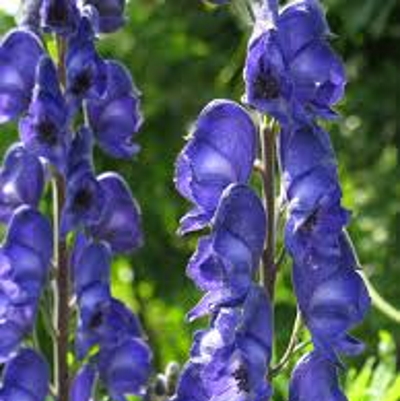 The monkshood plant is an herbaceous wildflower that can be found growing in mountain meadows throughout the northern hemisphere. The plant gets its name from the shape of the posterior sepal of the flowers, which resembles the cowls worn by monks. Also known as wolfsbane and Aconitum, monkshood has become popular as a garden addition because of its purple/blue flowers and attractive foliage. Growing 2 to 4 feet (0.5 to 1 m.) tall and 1 to 2 feet (0.5 m.) wide, perennial monkshood is best grown as a background plant. The leaves of the monkshood plant are palmate, meaning hand-shaped, with lobed “fingers” that often have toothed edges and vary in color from light to dark green. In late summer or early fall, it sends up showy spires of purple/blue flowers. Monkshead is not invasive and is both deer and rabbit resistant. However, monkshood, or wolfsbane, is moderately difficult to grow and once planted, doesn’t like to be moved so the best way to grow monkshood is to choose your spot carefully. It sometimes takes a while for it to become established.
The monkshood plant is an herbaceous wildflower that can be found growing in mountain meadows throughout the northern hemisphere. The plant gets its name from the shape of the posterior sepal of the flowers, which resembles the cowls worn by monks. Also known as wolfsbane and Aconitum, monkshood has become popular as a garden addition because of its purple/blue flowers and attractive foliage. Growing 2 to 4 feet (0.5 to 1 m.) tall and 1 to 2 feet (0.5 m.) wide, perennial monkshood is best grown as a background plant. The leaves of the monkshood plant are palmate, meaning hand-shaped, with lobed “fingers” that often have toothed edges and vary in color from light to dark green. In late summer or early fall, it sends up showy spires of purple/blue flowers. Monkshead is not invasive and is both deer and rabbit resistant. However, monkshood, or wolfsbane, is moderately difficult to grow and once planted, doesn’t like to be moved so the best way to grow monkshood is to choose your spot carefully. It sometimes takes a while for it to become established.
